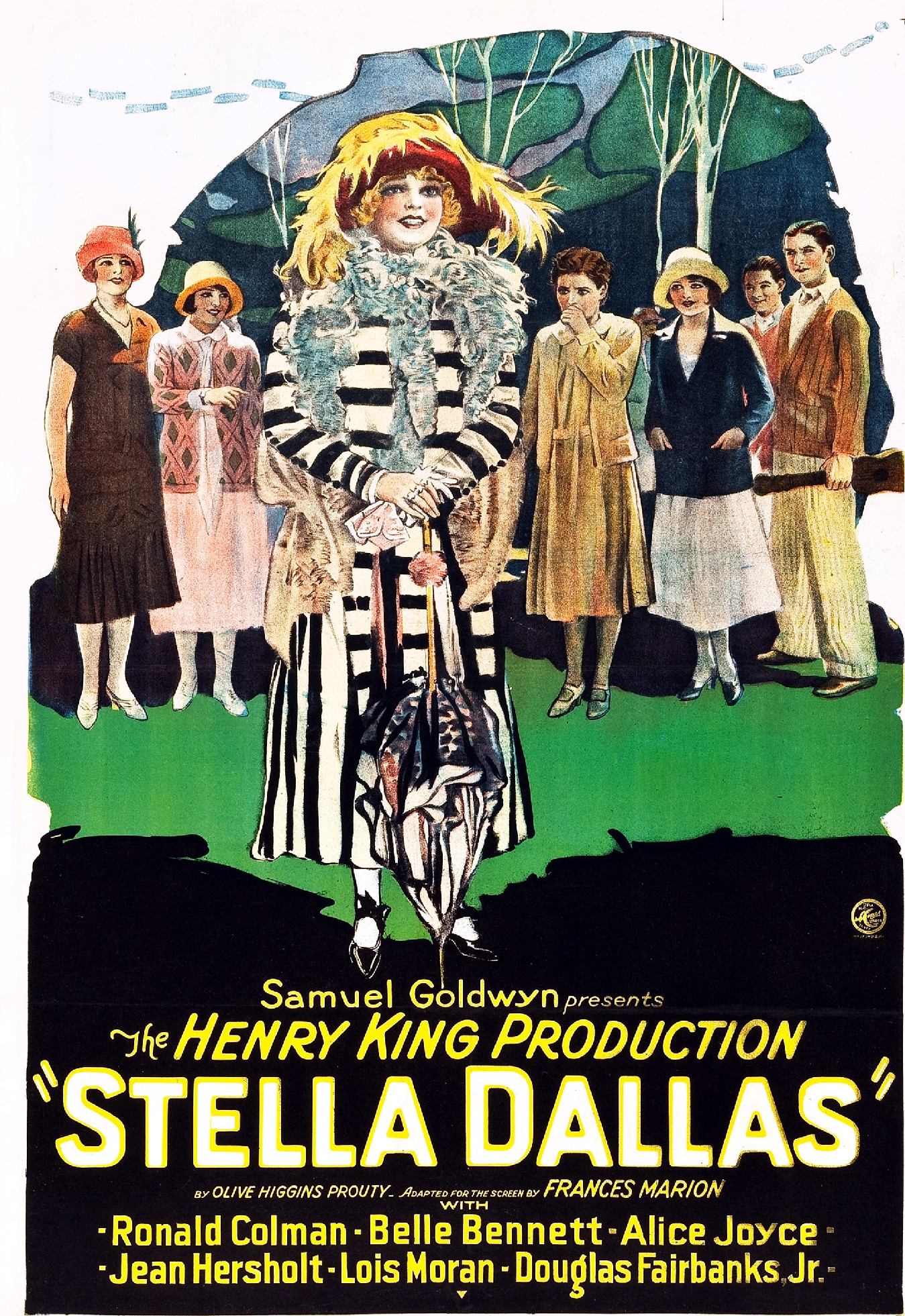“Stella Dallas” and the Woman’s Film
As I first wrote in my initial response, Stella Dallas exhausted me. Even just watching Stella walk about in her various outfits made me tired. However, I still can’t get the movie out of my head, days after first watching it and not particularly liking it very much. It made me think much more of the woman’s film/melodrama genre that was so popular during the time of Hollywood in which Stella Dallas was made.

Although this poster is for the 1925 version, not King Vidor’s 1937 film, Stella’s wild outfits remain the same
Over the weekend (technically, on May 31st), I went to go watch Booksmart, which combined with this class, readings, and films, made me think about films by women for women and how it differs than any other films, and how modern woman’s films and melodramas are portrayed. As Wikipedia and the various readings for this class taught me, often during a woman’s film, the female protagonist is forced to choose between work, family, and/or love. One of the trailers before Booksmart was for a new movie, Where’d You Go, Bernadette.
Just by watching the trailer, I was reminded of Stella Dallas, even though the two films differ greatly plotwise. In the trailer, Bernadette is told that she needs to work to survive and by choosing family, she lost a bit of herself. This features the common dilemma found in woman’s films, such as Mildred Pierce, which we watched a bit of last semester in ENG 230. Both films show women that have found wealth through successful careers but either feel restrained (Bernadette) or unappreciated (Mildred) by their familial relations. In Bernadette’s case though, she destroys a neighbor’s house and flees to Antarctica to try to fill the void left by not working for a long period of time.
I also kept thinking of the 2015 film, Carol, which, coincidentally (or not?), also stars Cate Blanchett. Directed by Todd Haynes, who often channels the fifties melodramatic films of Douglas Sirk, I think the film also relates to Stella Dallas. I think Therese and Stella are similar enough at the beginning of the film- they are unhappy in their current relationships (romantic or otherwise) and desire something greater. Carol also faces similar challenges with her daughter as Stella does, as both women greatly love their children but face varying difficulties. For Stella, the main challenge is social status and class, and she ultimately sacrifices her relationship with her daughter for the daughter’s supposed happiness. Carol loses her daughter due to her sexuality and a cruel ex husband, although unlike Stella, Carol gets regular visitation of her daughter. Carol and Therese also get a happier ending than Stella, but the final shots of both films are similar. Stella Dallas ends with Stella crying, but smiling, walking away from seeing her daughter get married.
Carol ends with Carol grinning at Therese after their months-long separation.
Both mother figures from the two movies find their happiness, even if it’s only for a moment, and even if it meant sacrificing themselves for their daughters.
Works Cited
“Stella Dallas Poster.” Wikipedia, upload.wikimedia.org/wikipedia/commons/5/54/Stella_Dallas_poster.jpg.
Haynes, Todd, director. Carol. YouTube, The Weinstein Company, 2015, www.youtube.com/watch?v=h9nWNDvj_2c.
Linklater, Richard, director. Where’d You Go, Bernadette. YouTube, 18 Dec. 2018, youtu.be/Em1onUCArxs.
Vidor, King, director. Stella Dallas. YouTube, United Artists, 1937, youtu.be/M8x2PSIhbh0.